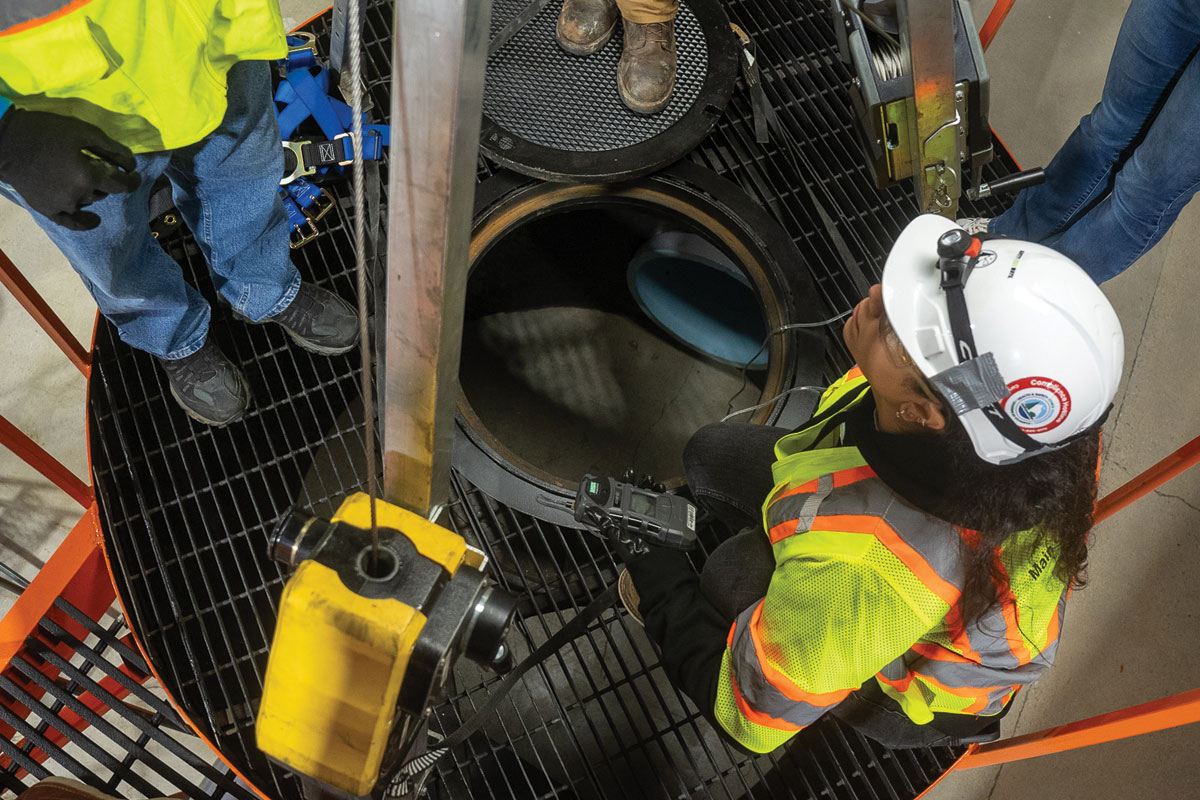
The Basics of Jetter Nozzle Maintenance: How to Clean Nozzles
In today’s competitive jetter nozzle market, it is becoming increasingly more difficult to determine what tools are best for general and specific jobs and what manufacturers make the tools that best meet your needs.
Every manufacturer or salesperson claims their offering is “The Best” and sometimes it can be difficult to determine which claims are real and which are not.
RELATED: New WJTA High Pressure Waterjetting Safety Video Available
Inspection
It is good practice to visually inspect the tools being used both before and after use to ensure there are no defects such as cracks, excessive wear or other damage.
Tools showing signs of cracks or excessive wear may need to be repaired or discarded and should not be used until it has been evaluated by a qualified technician.

Blocked Jets or Orifices
This is one of the most critical and simple things that can be done to ensure the tools are work ready when needed.
Simply observing the nozzle as it is being retrieved to the jetter will allow the operator to see if the jets are all open, as there is usually a squirt of water upon retrieval. An alternative is holding the nozzle under a tap and see that the orifices all flow freely.
RELATED: Welcome to Pipe Cleaning PRO
Cleaning
If an orifice is blocked or partially obscured, cleaning it is an easy task.
If possible, remove the insert from the nozzle and using a smooth pointed tool – a dental pick, paper clip or a piece of wire are good choices – remove the obstruction.
Try to avoid using welding tip cleaners as these have a rough, abrasive coating which can damage the orifice and cause it to fail prematurely.
Reinstall the insert in the nozzle using an anti-seize compound to facilitate future removals.
If it is not convenient to remove the insert, then clearing the obstruction by pushing the debris back into the nozzle is an option. Caution must be taken to ensure the debris is flushed from the nozzle or it will lodge in another insert and again cause problems.

Replacing Inserts
The first sign that an insert or set of inserts may need replacing is when it becomes necessary for the operator to increase engine RPM to increase water use as it becomes increasingly more difficult to bring the nozzle to pressure.
Visually, the operator may see the insert is washed out, oval or misshaped, or the insert is simply missing.
Lubricating
Nozzles that rotate on a center shaft may require some special attention.
While all manufacturers rely on the rotating barrel to spin freely on a stationary shaft, not all manufacturers require lubrication of these parts. In fact, in some cases, lubricating these nozzles may be detrimental to the nozzle’s operation and cause warranty to not be granted.
Check with your chosen manufacturer as to the requirement of lubricating or not and what practice is recommended.
Storage
Storing the tools in a clean, dry environment is ideal, however, the nature of the work usually make this difficult.
When possible, rinse any excessive dirt or foreign matter from the tool, wipe it down and, if your jetter is equipped, place it back on the rack provided.
At a minimum, ensure the cabinet or toolbox is clean and that there is no accumulation of dirt or debris that can find its way into the nozzles and cause operational problems at critical times.
Skids, Centralizers, Proofers and Extensions
While it is a fact that centering a nozzle in the pipe improves performance and safety by ensuring the nozzle cannot enter a service or get turned around and become a missile on it’s way back to the jetter, it is also a fact that, in most instances the reason a nozzle becomes stuck in the pipe is because the skid, centralizer or proofer has hung up on something.
Safety concerns require a nozzle assembly be of sufficient length (tip of nozzle to hose connection) to eliminate the possibility of nozzles being deflected and becoming a safety concern. A nozzle extension, such as a piece of Schedule 80 pipe or manufactured nozzle extension will meet this requirement.
The choice of extensions, skids, centralizer or proofer is an operational decision, however, to ensure operator safety it is imperative to ensure the assembly meets the length requirements mentioned above.
RELATED: How to Select the Proper Nozzle for your Job
In Conclusion
Operating a jetter system, be it a small or large unit is a costly proposition.
Acquiring and maintaining the proper nozzle selection will either enhance or reduce the efficiency of your equipment and crews.
Investigating different manufacturers offerings and deciding which tools you should invest in can seem a daunting task.
Ask your supplier for performance data on their products and, when possible, get a demo or trial of the tool to be certain it meets your needs and will be a good addition to the tooling on your jetter.
Ken Billingham is international product specialist for KEG GmbH.




